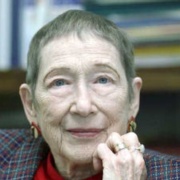The Robert H. and Joanne Simpson Mentorship Award

(Prior to 2020, The Joanne Simpson Mentorship Award)
Description
The Robert H. and Joanne Simpson Mentorship Award recognizes individuals who have spent most of their careers in the government or private sectors and who, over a substantial period of time, have provided outstanding and inspiring mentorship of professional colleagues or students. Academics who have done significant mentoring outside the normal college/university setting also qualify, although those primarily mentoring students and postdocs at their college/university should be considered for the Edward N. Lorenz Teaching Excellence Award.
Nominations are considered by the Awards Oversight Committee, which makes a recommendation for final approval by AMS Council.
Nomination Process
Thank you for your interest in submitting a nomination! AMS membership is not required to submit an award nomination. Nominations are due by 1 May. The nominator is responsible for uploading the entire nomination package.
Requirements
- citation (25 word maximum)
- bibliography (if appropriate) (3 page maximum)
- nomination letter (3 page maximum)
- nominee Curriculum Vitae (if appropriate) (2 pages maximum)
- three (3) letters of support (2 page maximum each)
Joanne Simpson (1923 – 2010)
Joanne Simpson was the first woman to earn a PhD in meteorology in 1949 from the University of Chicago. She was also a member of the National Academy of Engineering and contributed to research in many areas of the atmospheric sciences, particularly in the field of tropical meteorology. Simpson has researched hot towers, hurricanes, the trade winds, air-sea interactions, and as chief scientist for meteorology at NASA’s Goddard Space Flight Center, she helped develop the Tropical Rainfall Measuring Mission.
In 1958, she collaborated with Herbert Riehl, her former professor and described the way the atmosphere moved heat and moisture away from the tropics to higher latitudes, describing “undiluted chimney clouds”, which later became known as “hot towers”. Simpson also developed mathematical cloud models, at first using a slide rule, and then with early computers.
In 1966, she became the director of Project Stormfury, while chief of the Experimental Meteorology Branch of the Environmental Science Services Administration's Institute for Atmospheric Sciences. She eventually became NASA's lead weather researcher and authored or co-authored over 190 articles.
Her teaching and research career at universities includes time at the University of Chicago, New York University, Illinois Institute of Technology, Woods Hole Oceanographic Institution, UCLA, the Environmental Science Services Administration (ESSA), the National Oceanic and Atmospheric Administration (NOAA), and the University of Virginia.
In 1954, Simpson received the Guggenheim Fellowship, the Meisinger Award from the American Meteorological Society in 1962, and was selected by the Los Angeles Times as Woman of the Year in Science during 1963. In 1967, she won a Department of Commerce Silver Medal for her work with the Experimental Meteorology Branch. Simpson was elected a fellow of the American Meteorological Society in 1968 and was a recipient of the American Meteorological Society's Carl-Gustaf Rossby Research Medal in 1983, its highest honor, for "outstanding contributions to man's understanding of the structure of the atmosphere."